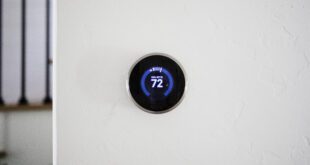Though the first official assessment that climate change was caused by human activity came in 1988, with NASA scientist James Hansen’s famous testimony to the U.S. Congress, the “carbon neutral” concept, which refers to achieving net zero carbon emissions, is a relatively new one. The non-profit Climate Neutral Network, which developed the Climate Neutral Certification, was incorporated in 1999; the first company to receive certification was the California-based nutrition supplement producer Shaklee Corporation, in 2000. The United Nations pledged to work towards climate neutrality in 2007.
The phrase “carbon neutral” was the New Oxford American Dictionary‘s Word of the Year for 2006. That same year, Honda became the first automaker to announce voluntary carbon dioxide emissions reduction targets for its worldwide fleet of automobile, power sports and power equipment products, as well as its global network of manufacturing plants. And now, the company has unveiled a compelling new solution that seeks to address emissions reductions on the consumer level: the Honda Smart Home US, a combined house and electric vehicle that together enable zero net energy living and transportation.
For Zero Carbon Innovation, America Matters
Several countries have made pledges to become carbon neutral, including Costa Rica, Iceland, Maldives, New Zealand, Norway, Tuvalu, Vatican City and Bhutan. But while these pledges are important—and provide excellent examples for other countries—they are small potatoes in the larger scheme of global warming. The main emitters are China, which contributes 26.43% of global emissions, followed by the United States, at 17.33%. The third biggest emitter, India, is not even close, at 6.41%.
But looking at total emissions doesn’t tell the whole story; the per capita numbers are more revealing. And since a big part of lowering emissions is about changing individual behavior, it is important to consider the per capita contribution to the global total. China may be the biggest total emitter, but it also has a fifth of the world’s population, compared to only about 4.5 percent of the world’s population in the United States. Approximately 44 percent of greenhouse gas emissions in the United States come from energy used to power homes and light duty vehicles (cars and light trucks). Cars and light trucks account for 60 percent of U.S. transportation emissions, producing almost one-fifth of the nation’s total global warming pollution. A typical American household emits 48 tons of carbon dioxide every year, the majority of which comes from motor vehicle fuel and energy to power a home.
Sure, in terms of annual per capita carbon dioxide emissions, the U.S. ranks 12th, but behind much smaller countries whose individual residents emit more (like the oil-rich, luxury car and SVU-loving fiefdoms of the Persian Gulf: Qatar, Kuwait, Brunei, United Arab Emirates and Bahrain). Among the big industrialized nations, the U.S. is by far the main emitter. (China ranks 56th on the per capita list). Conclusion: Americans are the world’s biggest polluters. Arguably, it is more essential to address zero carbon living and mobility in the United States than anywhere else.
As The Guardian‘s environment editor Adam Vaughn points out, “Examining CO2 per capita around the world also shows us the gulf between the developed world’s responsibility for climate change and that of the developing world.” Looking at both the total and per capita numbers, it is clear that Americans have a big responsibility to clean up the dirty fuel act.
Intelligent, Earth-Friendly Design in a Living Laboratory
Honda has answered the call. Last month, the world’s eighth largest automaker marked the opening of their Smart Home US, a powerful showcase of various technologies that together create a zero net carbon living and mobility system. Remarkably, the Smart Home is capable of producing more energy on-site from renewable sources than it consumes annually, including enough energy to power a Honda Fit EV (electric vehicle) for daily commuting. The “Smart Home” moniker is well deserved: It boasts a Home Energy Management System (HEMS)—a proprietary hardware and software system that maximizes energy efficiency by monitoring, controlling and optimizing electrical generation and consumption throughout the home’s microgrid—that communicates with the electric utility to improve grid stability. The result is impressive: The Smart Home uses less than half of the energy for heating, cooling and lighting compared to a similarly sized new home in the Davis area. But that’s not all. If the electricity grid is overloaded, the Smart Home can shed its own load and even supply power back to grid.
The site of the Smart Home was well chosen: the West Village campus of the University of California, Davis, the location of the largest planned zero net energy housing development in the United States, home to the university’s research centers for energy efficiency, sustainability and transportation. The Smart Home’s eventual occupant will be a member of the UC Davis community and will be announced soon.
“In West Village, UC Davis made a commitment to build zero net energy housing and gave our research center the goal of creating the first university hub to focus and energy and transportation research,” said Dan Sperling, Ph.D., director of the Institute of Transportation Studies at the University of California, Davis. “Honda Smart Home is a dynamic environment that will help the university meet its research objectives and is a perfect example of the industry partnerships we strive to build.”
The Smart Home isn’t just a (literally) cool place to live, it is being billed as a “living laboratory,” where researchers from Honda, UC Davis and Pacific Gas and Electric (PG&E) will “evaluate new technologies and business opportunities at the intersection of housing, transportation, energy and the environment.”
Green is in the Details
The Smart Home is chock full of sustainable features that would make most eco-home owners a bit jealous. The roof is outfitted with a 9.5kw solar photovoltaic (PV) system that generates more energy that the home and Fit EV consume annually. The Fit EV has been modified to accept DC power directly, eliminating up to half of the energy normally lost during the more traditional DC-to-A and AC-to-DC power conversion. And buried in the home’s backyard are eight 20-foot-deep boreholes that fuel a geothermal heat pump that heats and cools the home’s floors and ceilings year-round.
 Alternative Energy HQ solar power for homes, wind energy, and bio fuel issues
Alternative Energy HQ solar power for homes, wind energy, and bio fuel issues







